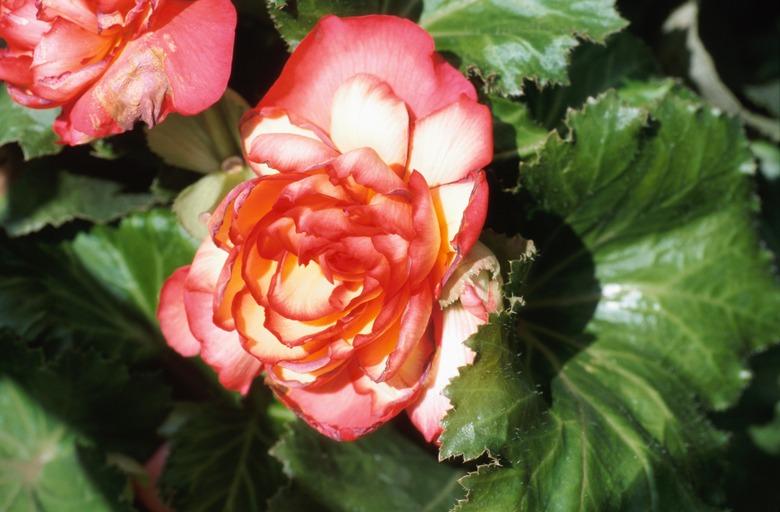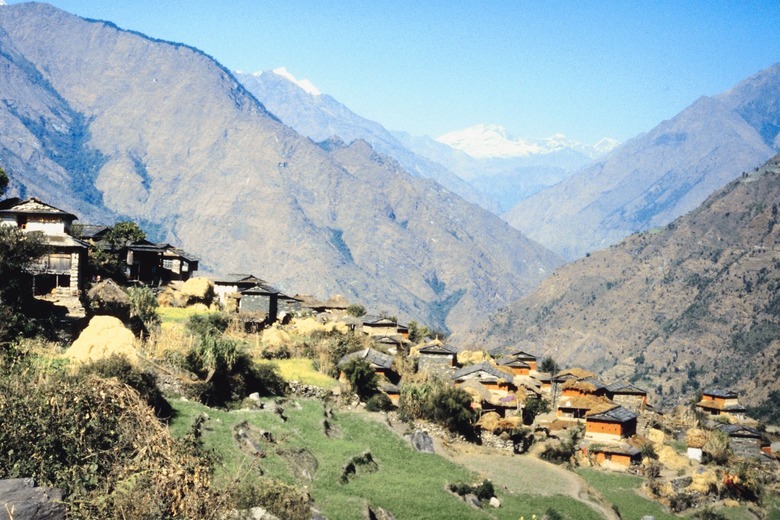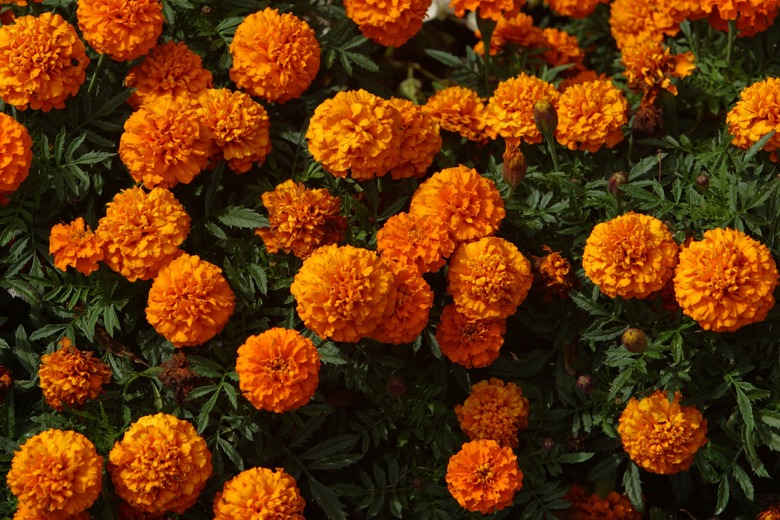Different Types Of Flowers Found In India
Indian flowers are integral to the Indian ecosystem and inseparable from the Indian culture. Ancient epic Hindu tales like Ramayana and Mahabharata describe different types of Indian flowers. Indians offer flowers to their gods to symbolize their devotion. During Indian weddings, flowers decorate the event in garlands, bouquets and other decorations. Wildflower species are also found throughout the Indian countryside and some, such as the hibiscus and begonia, have been cultivated to grow in gardens around the world.
Lotus
The lotus is known as a sacred flower in India and is the country's national flower. In Indian art and mythology, the lotus symbolizes fertility, divinity, knowledge and wealth. This water plant has bright fragrant flowers and broad, floating leaves. Long stems containing air pockets enable this flower to float. Numerous petals overlap to form a symmetrical pattern. Lotus seeds are edible and are believed to benefit the kidneys, spleen, and heart. Leaves and stalks are cooked as vegetables in India, and it's said the tubers have a taste similar to the sweet potato. Lotus petals are often used as a garnish.
- Indian flowers are integral to the Indian ecosystem and inseparable from the Indian culture.
- Wildflower species are also found throughout the Indian countryside and some, such as the hibiscus and begonia, have been cultivated to grow in gardens around the world.
Rosy Eranthemum
This perennial herb grows from three up to 7 feet high. Blue-violet flowers bloom either in a spike of 4 to 6 inches long or singly in the leaf axils. Flowers are very fragrant and tend to fade to a rosy color. Rosy eranthemum flowers in November to April and is commonly found in shady forests in Western Ghats.
Brahma Kamal
A much-revered flower of the Himalayas that grows at an altitude of 9,800 to 15,000 feet above sea level, the Brahma kamal is a true example of plant life on higher mountain ranges. Flower heads are actually purple, but are covered with layers of green-yellow boat-shaped bracts that have a papery texture. This cover keeps the inner parts warm in the cold mountain air. Brahma kamal blooms during the monsoons and can be found in abundance in places of high altitude, such as the famous Valley of Flowers. Popular as an offering in the hill temples, Brahma kamal is found on many Indian shrines. Also known for its medicinal value, the root is applied to cuts and bruises. This flower has appeared on Indian postal stamps and is also the official state flower of Uttarakhand.
- This perennial herb grows from three up to 7 feet high.
- A much-revered flower of the Himalayas that grows at an altitude of 9,800 to 15,000 feet above sea level, the Brahma kamal is a true example of plant life on higher mountain ranges.
Marigold
Bright yellow and orange marigolds are very popular decorative flowers, that are braided into garlands and offered to the gods. The plant blooms between July and September, and the fragrant flowers have both male and female parts. The broad lower leaves are spatula-shaped, while the upper leaves are oblong with smooth edges. Branching stems grow 12 to 24 feet tall. Marigold flower petals are often used in salads. Indians boil the flower to create a natural yellow dye. The plant is also dried and burnt to serve as an insect repellent.
- Bright yellow and orange marigolds are very popular decorative flowers, that are braided into garlands and offered to the gods.




